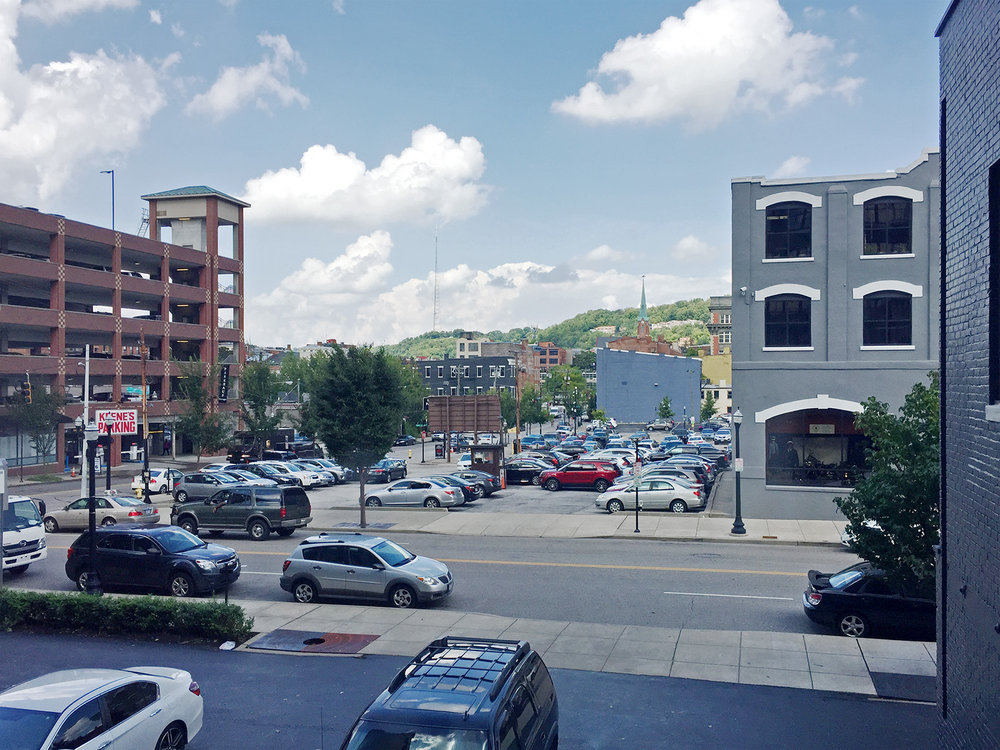Everything posted by jjakucyk
-
Cincinnati: West End: TQL Stadium
People move to cities because of job opportunities. Raleigh-Durham, Greensboro, Las Vegas, and Austin are doing just fine attracting people without much (or any) major-league sports. Nashville, Charlotte, Houston, and San Antonio also aren't really any great shakes sports-wise. It's a nice-to-have secondary consideration, but it's no driver. We shouldn't be doubling down on something that's of questionable value. Like major league soccer is going to be "the one" that finally tips the scale? Come on.
-
Cincinnati: West End: TQL Stadium
Except Crosley Field WASN'T preserved, nor the neighborhood that surrounds it. In its place we have a major interstate highway and a low-density industrial park. We lost out on our own Wrigleyville. No new stadiums have spawned that sort of development, neither will this one. The likelihood that this new stadium will be revered is remote, but I would love to be proven wrong because of great design and placemaking, the sorts of things that make people care about a building. I don't have high hopes for that though. It's not the fault of the remaining buildings that their surroundings have been denuded, and it doesn't make them less deserving of care. That's why I said they shouldn't be demolished "just because" and there should at least be an attempt to keep what they can. If something just won't work, ok, but at least make the effort. This "just tear it all down" mindset is why the scraps of the West End we have are all you'll find left in most cities. That OTR remains so intact is a miracle, because it happened despite this attitude. That doesn't make other neighborhoods less worthy.
- Cincinnati: West End: TQL Stadium
-
Cincinnati: Over-the-Rhine: Development and News
I can say nobody around the office who I shared the renderings of 12th and Sycamore with think it's a good looking design. And this is an architecture firm. It would actually look just as appropriate in a Mason office park, it's that generic and dated.
-
Cincinnati: Over-the-Rhine: Development and News
It'll definitely take a chunk out of our view to Mt. Auburn and Salem Church. If it were a better looking building...
-
Cincinnati: Over-the-Rhine: Development and News
It looks like they lopped off the top of Atrium One and plopped it on the ground. The skeletal form has a very 80s or early 90s PoMo feel to it, but then the staggered infill windows brings in an extra layer of dated early 2010s rhythm. The two-story base doesn't really bother me, but the stair stepping doesn't actually achieve anything since the red part of the building pops back up in the background. Yet another case of a deconstructed rather than punctuated corner.
-
Cincinnati Streetcar / The Connector News
Of course the Enquirer's headline: "Cincinnati weather: Around 15K without power, streetcar suspended". No mention of all the traffic signals that were out, flooded streets, closed intersections in the article (though somewhat showed in their lazy video clearly shot just from their office window). Just had to get in a jab at the streetcar.
-
Cincinnati: West End: Development and News
The vacant hillside lots are very expensive to build on though. It's a good first assumption that if a hillside lot is vacant, it's because the house that was there had some sort of stability issue that accelerated its demise. That needs to be addressed in anything new. The foundations and geotechnical engineering and access issues make doing anything small or cheap pretty hard, and the zoning/parking requirements can force you into single-family anyway which means you can't amortize those footprint costs among more units. I looked at a couple vacant lots for a potential client on Mulberry Street and every contractor I talked to was in the $600K range for a relatively simple 1,800 SF home. Go bigger and that cost per SF goes down, even though the total price doesn't. That's Hyde Park/Indian Hill money, but not over-the-top high end either. Except in this case it's going into unexciting concrete, not slate roofs, bluestone terraces, Carrara tile, and Wolf/Sub-Zero appliances.
-
Cincinnati: West End: Development and News
I agree that vacant building owners wouldn't want to do this... but if enforced (by fining non-compliant owners), it would a) generate some revenue for the City, b) encourage owners to sell properties they've been sitting on, and c) would make the buildings a bit more attractive for neighbors to look at. I care more about the first two effects. Anything that makes it LESS attractive for owners to sit on vacant buildings is a good thing. Or just as likely they allow the fines and other liens on the property to accumulate, making it harder to sell at anything but a windfall, which is what these speculators are waiting for anyway. The whole VMBL program came about for similar reasons, but has in many cases made it more difficult for little guys to buy such properties with all the added encumbrances.
- Cincinnati: West End: TQL Stadium
-
Gentrification News & Discussion
Has Kunstler contributed anything to urban design discourse in the last...5 years? He's gone all-in on the long emergency, financial shenanigans, and various economic rants, which is fine in small doses, but not when it's 100% of your shtick.
-
Gentrification News & Discussion
Sort of like how all the Chipotle restaurants in new buildings are trying to hard to pretend like they're old, and they do a better job than most (the exposed bar joists and ductwork you can get in any new commercial building works with the industrial aesthetic they have), but it still comes off as a bit forced. The Clifton Avenue location was their first one here, and it's definitely the coolest. But it's also the only one in an old building. Don Pablo's, which has been a fixture at Rookwood Pavilion has also recently closed. That's kind of an interesting and sad situation because they based other new locations on the design of the Rookwood (LeBlond Machine Tools) power house. Unfortunately, being a strip mall, it's unlikely that anything but another chain is going to be put in there.
-
Gentrification News & Discussion
I posted a couple paragraphs of response on the Urbanophile website, but the gist of it is that I'd take high-quality urban sameness over low-quality suburban sameness any day.
-
Cincinnati: Complete Streets, Road Diets, and Traffic Calming
That's a turd sandwich vs giant douche kind of choice. But there's no 80% wide lane, it's a 140% wide lane regardless of parking. I think 14-feet is the standard for that, which if you have a parked car snugged up to the curb can look like there's juuuuuust enough room to drive next to it, but not really.
-
Cincinnati: Complete Streets, Road Diets, and Traffic Calming
The "wide right lanes" are/were supposed to be bike-friendly designs that allowed room for cars to pass cyclists while also allowing those cars to keep the entire lane swept of debris and reducing the need for extra line striping. They've been mostly deprecated now however, because the wide lanes encourage speeding and probably still run afoul of 3-foot minimum passing laws. They also give no indication what they're there for When cars are parked in those wide lanes, the space left over is even greater. So I'd call this Vine Street re-striping neutral at best, but I'd actually call it road glut because it adds a lane for moving traffic while squeezing out what little accommodation for cyclists there was.
-
Cincinnati: West End: TQL Stadium
1900 is the Auditor's default "we don't really know" date. The building has a dedication stone up high on the front wall, but I can't read it on Google Maps. 1866 does sound right from cincity's description. Most of those dedication stones were placed like that on buildings from the 1840s-1870s. It even looks like it could be written in Hebrew. https://goo.gl/maps/Pqg6RTjUkQ82
- Cincinnati: West End: TQL Stadium
-
Cincinnati: West End: TQL Stadium
So just because a building has unsympathetic alterations it should be demolished? Are you one of the people who say the Dennison Hotel should've been torn down just because its windows were replaced with glass block? Should Old St. George have been torn down when its steeples burned? Should the Tyler Davidson Fountain have been scrapped when it rusted? You realize those are easy things to fix, right? The point of preservation here is not to fix everything in amber, but also not to just tear stuff down because it's a little dirty. If historic fabric can be saved and/or incorporated into the new development, great! Why shouldn't it be done if it can be done? If it can't be, fine, but you have to make the effort. Historical assets are not usually appreciated until they're gone, and you can't put them back. This blasé attitude about old buildings is why cities like Indianapolis, Kansas City, and even Columbus have so little historic fabric left. Cincinnati only has what it does because it was such a big city so early on that the frighteningly huge amount of demolition still didn't wipe it all away. Few cities are so lucky.
- Cincinnati: West End: TQL Stadium
- Cincinnati: West End: TQL Stadium
-
Cincinnati: University of Cincinnati: Development and News
Nice, that could even be a bio-swale between the cycle track and the roadway (sort of like what was done on Spring Grove between Mitchell and Clifton).
-
Cincinnati: University of Cincinnati: Development and News
If the city insists on two-way paths (which really should only be used in rural settings, urban streets should have one-way cycle tracks on each side of the street) then it really wouldn't be hard to do it properly, rather than as these merely-wide sidewalks. If you want to do this all American-like, use black asphalt on the cycle track instead of red, use regular poured concrete on the sidewalk instead of pavers, and the curb next to the grass could probably be eliminated, and add a few stencils for "bike only" and "ped only" and you're done. It might not even be as expensive as the full-width concrete. But no, the wide sidewalk design is the laziest/easiest to design and least useful.
-
Cincinnati: University of Cincinnati: Development and News
I think they're turning it into one of those damned "shared use paths" like on Eggleston.
-
Suburban Sprawl News & Discussion
^It can't, it's hit up against all the mountain ranges. Gotta start growing up rather than growing out.
-
Cincinnati: Over-the-Rhine: Development and News
That water has something to do with an underground vault and it's being pumped onto the sidewalk (which I agree is very irritating). The garage is only 20 years old though and is essentially in brand-new condition. Yes it's owned by the county and is used for Job & Family Services, the courthouse, and some other surrounding offices. It's also 100% full every single workday, but 99% empty every night. They don't give good discounts for evening use, and overnight parking is very restricted because daytime users arrive very early. It does also have ground floor retail on half of its Sycamore Street side (Subway and also a small office space that I've never seen used), plus some frontage on the Reading Road side as well. It's really not bad in that respect.






